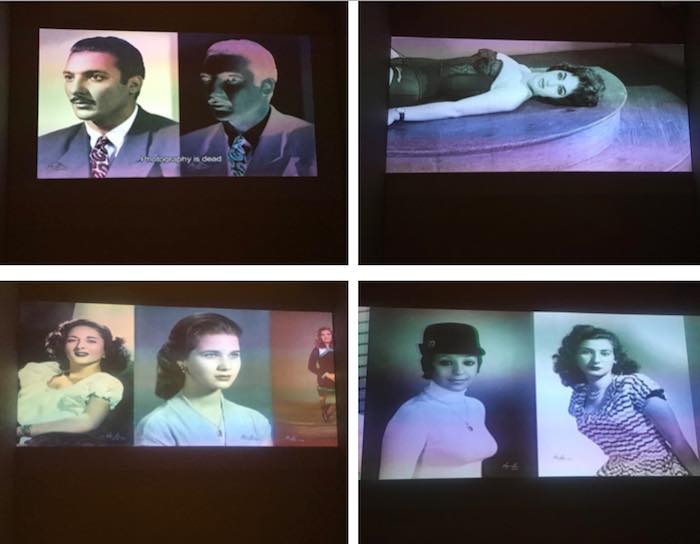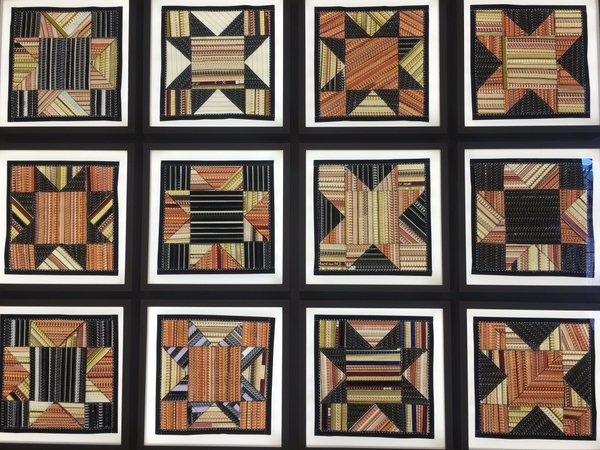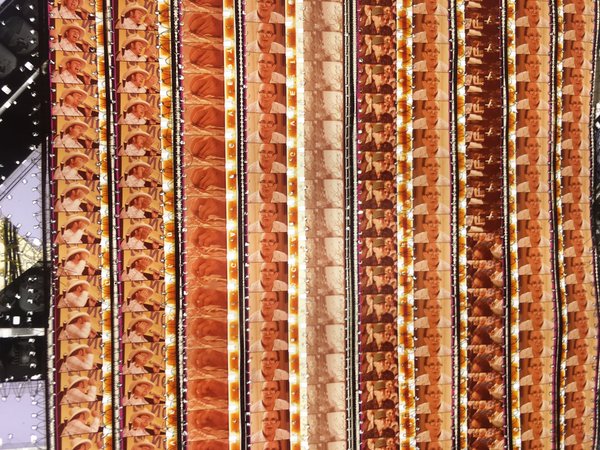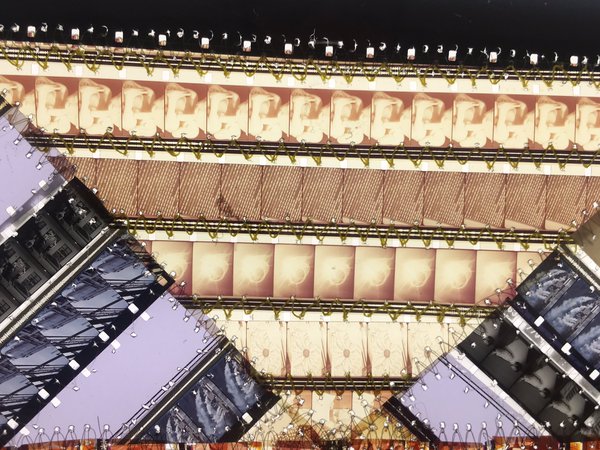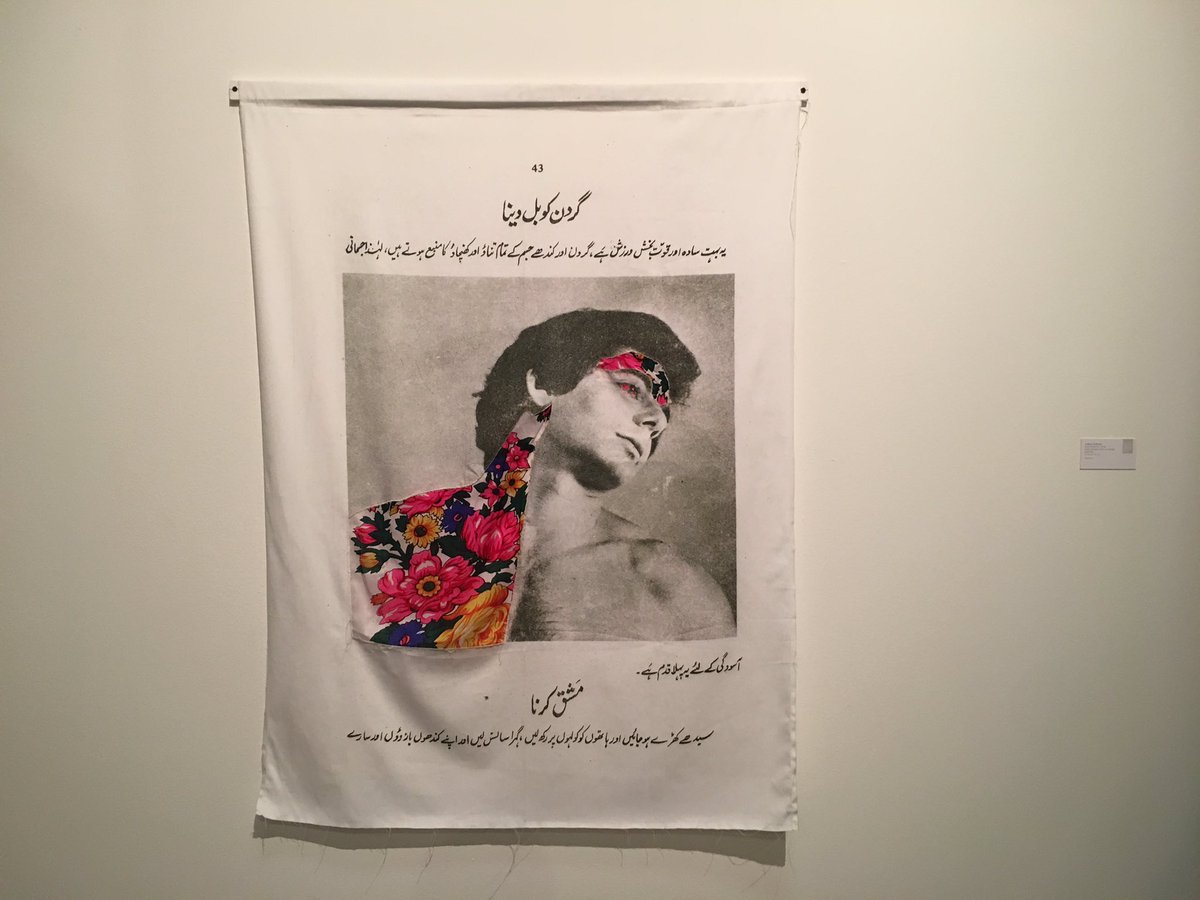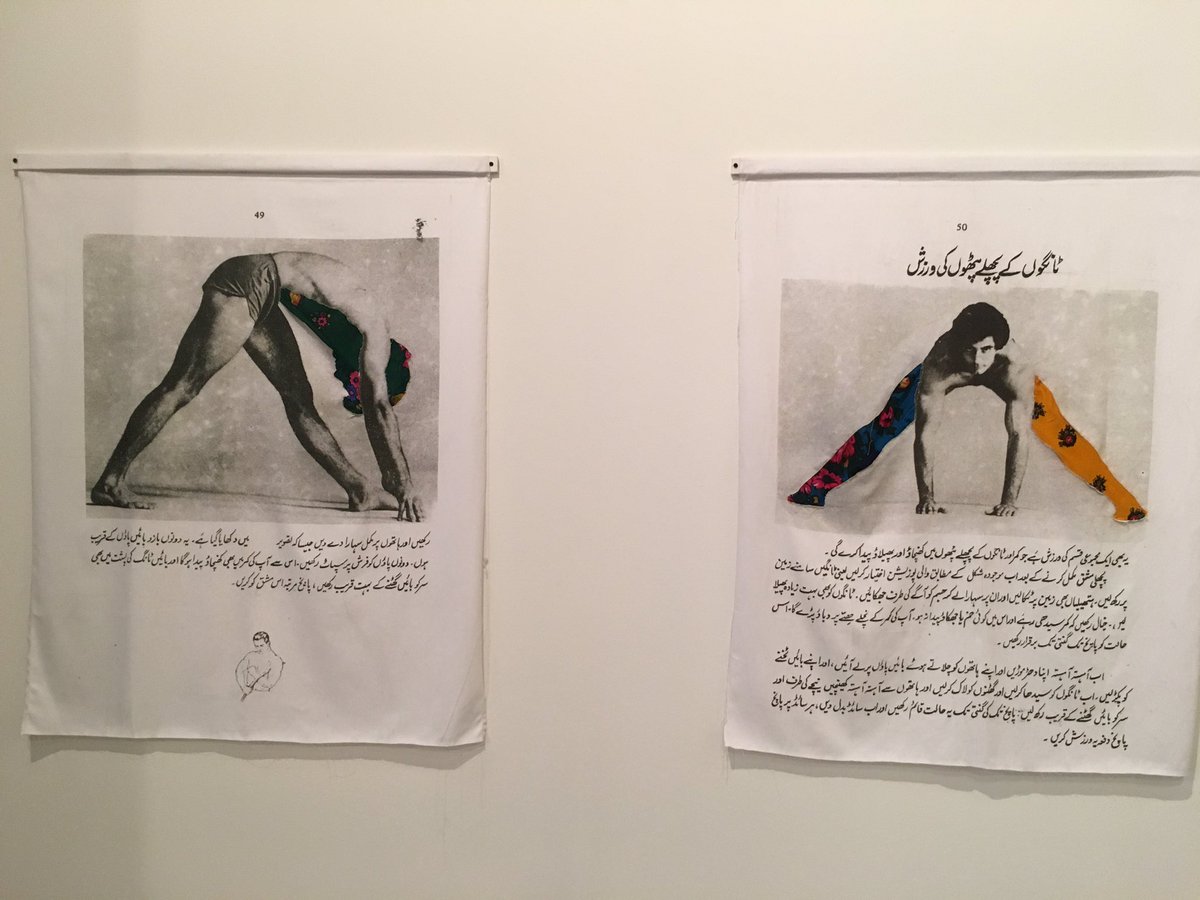My Top 15 Artworks 2016
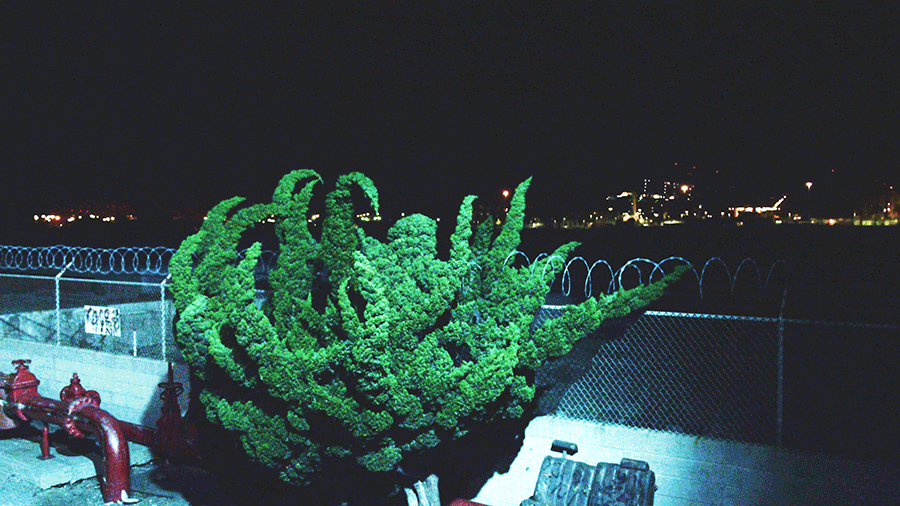
Cyprien Gaillard Nightlife, 2015 © Cyprien Gaillard Courtesy the artist and Sprüth Magers
A selection of top 15 works I saw at exhibitions this year that stood out for me, and stayed with me long after I saw them. They are listed in alphabetical order (artist's first name) and I included the name of the exhibition and city where I saw them.
In the next post I will share my top exhibitions of the year.
The 32min film is a semi-fictional story of studio photography in the Middle East during the 1940s and 50s, through the eyes of the legendary Armenian-Egyptian photographer Van Leo. Through it we learn about the history of his photography and his relationship to Cairo and the people he photographed. Far from being a nostalgic film looking back, it also weaves in the social and political changes in Egypt.
Babel 2001 is a large-scale sculptural installation that takes the form of a circular tower made from hundreds of second-hand analogue radios that the artist has stacked in layers. The radios are tuned to a multitude of different stations and are adjusted to the minimum volume at which they are audible. Nevertheless, they compete with each other and create a cacophony of low, continuous sound, resulting in inaccessible information, voices or music.
Meireles describes it as a "tower of incomprehension". It has to be experienced in person. Read more about it here.
3.
Cyprien Gaillard - Nightlife from The Infinite Mix, 180 The Strand, London
Cyprien Gaillard’s 3D film and audio installation Nightlife was shot at night over a period of two years in Cleveland, Los Angeles and Berlin. Like much of Gaillard’s work, the film is a meditation on the ways in which traumatic events of recent history can be read in – or have been memorialised by – urban or ‘natural’ landscapes, architecture and public space.
Accompanied by a dub soundtrack featuring a looped sample of Alton Ellis’s 1970 classic ‘Black Man’s World’ and the 1971 remake ‘Black Man’s Pride’, the film takes in a bomb-damaged sculpture in front of the Cleveland Museum of Art; the riotous swaying of windblown trees in dark LA streets; and a fireworks display above Berlin’s Olympiastadion.
The final scenes return to Cleveland, where the German oak tree gifted to African-American gold-medallist Jesse Owens by Nazi organisers of the 1936 Olympic Games stands in the courtyard of the athlete’s former high school. Despite being comprised of two time-based mediums – film and music – Nightlife has distinct sculptural qualities. The vacillating volume and reverb of the film’s dub soundtrack conjures a shifting sonic space that mirrors the ghostly materiality of the film’s 3D visuals.
I was in awe of this film. I watched it twice when I was there. Incredibly layered and its meanings starts revealing itself with multiple viewings.
4. Ho Tzu-Nyen - Pythagoras from Time is Out of Joint exhibition at Sharjah Art Foundation
A dramatic and theatrical 35min installation that inclludes sound, film and more. Must confess, there were a few jump scares for me. The video here isn't from Sharjah, but from a previous exhibition in Singapore, but it was set up the same was as you see in the video. You can also listen to the artist in the video talk about the work.
5. John Akomfrah and Trevor Mathison - All That is Solid from British Art Show 8, Southampton
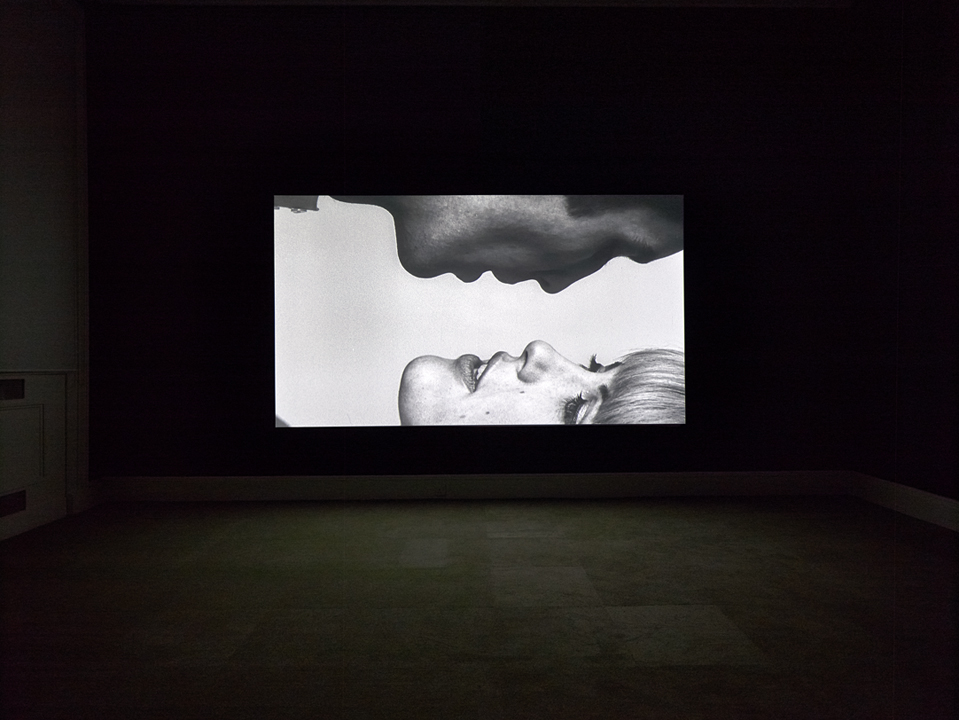
John Akomfrah & Trevor Mathison, All That Is Solid, 2015 © Smoking Dog Films. Installation view: British Art Show 8, 2015-17, Scottish National Gallery of Modern Art. Photo © John McKenzie

John Akomfrah & Trevor Mathison, All That Is Solid, 2015 © Smoking Dog Films. Installation view: British Art Show 8, 2015-17, Scottish National Gallery of Modern Art. Photo © John McKenzie
Akomfrah and Mathison’s new film All That Is Solid (2015) is a meditation on memory, transience and the limitations of conventional historical documentation. Constructed from a combination of new and archival footage, it explores the fact that sound and the voice – as insubstantial as fog or smoke – often leave no trace.
In their work together Akomfrah and Mathison reconfigure the relationship between sound and image: rather than one being secondary, they are conceived as a single entity.
Image via The Mosaic Rooms
In The Algerian Novel, the street is the stage for a different kind of storytelling. Seen by Kameli as ‘an immersion into Algeria’s history’ this documentary film looks at a street stall in Algiers, where a father and son sell postcards and reproductions of archival photographs.
We watch customers peruse the collections and hear inhabitants of Algiers, students, historians and writers, reflect on the significance of the images to the history of their country.
7. Katrien de Blauwer at Galerie Les Filles du Calvaire at Unseen Photo Fair, Amsterdam
I fell in love with these collages by Katrien De Blauwer when I saw them at the Unseen Photo Fair a few months ago. They looked cinematic, mysterious, personal, effortless yet deeply thoughtful. It was the first time I see her work and hope to see more. I looked her up after the fair and found this interview with De Blauwer on Conscientous Photo Magazine
.
My collages speak about myself, about what’s keeping me busy. They’re my stories, how I deal with the past. My grip on reality, my ritual and routine.
8. Leslie Hewitt - Untitled (Structures) from Collective Stance at SculptureCentre (New York)
Leslie Hewitt in collaboration with Bradford Young created an incredibly powerful and moving piece. This was part of a studio visit I attended, so I felt very lucky to hear from Hewitt herself talk about this work, the process and its meaning.
Untitled (Structures) (2012) is a two-channel film installation inspired by an archive of civil rights-era photographs housed at the Menil Collection in Houston. It presents series of silent vignettes shot at locations in Chicago, Memphis, and the Arkansas Delta; places that were profoundly impacted by the Great Migration and by the civil rights movement.
The installation poses critical questions of the historicity of the archive and photojournalistic modes. Hewitt and Young's close examination of such matters through the exploration of architecture, still photography, and body memory, move away from nostalgia and re-enactment as conventions.
Through the assertion of the work's contemporaneity, Hewitt and Young's project explores temporality, exposing the tension between still photography and the cinematic experiences of moving images, between the past and the present, between the physical and the psychological.
9. Maha Maamoun - Domestic Tourism II from Imperfect Chronology: Mapping the Contemporary I
A film essay made of appropriated footage from Egyptian satellite television featuring the Pyramids in Cairo from different Egyptian films, to evoke how the Pyramids have historically been used as an emblem of "progress" in popular culture.
A video sculpture that is both mesmerising and troubling.
Widely recognised as the ‘Father of Video Art’ Nam June Paik’s large body of work includes video sculptures, installations, performances, videotapes and television productions. He is attributed with coining the term ‘Electronic Superhighway’, an allegory for the networked highways of the Internet.
An ambitious work constructed from multiple TV screens, Paik’s Internet Dream (1994), displays a constant stream of rapidly changing scenes to hypnotic effect. It illustrates his early awareness of society’s move towards information saturation, celebrating the constant expansion associated with shifts forward in technology.
11. Nina Katchadourian - The Recarcassing Ceremony from Explode Every Day: An Inquiry into the Phenomena of Wonder at MASS MoCA, Massachusetts
A scene from Nina Katchadourian’s film “The Recarcassing Ceremony” at Mass MoCA | Image via The Boston Globe
I saw this piece in Katchadourian's studio during a studio visit. She talked about her work and what inspires it, and then gave us a sneak peak of this video which was due to be revealed at the MASS MoCA a few days after our visit.
The 25min film is features Playmobil figures that Katchadourian and her brother played with as kids. The film shows us the reenactment ceremony she and her brother did as children to replace two figures which had drowned with two new ones. Turning into more than kids playing with their toys, it becomes about the artist's relationship with her family.
12. Sabrina Gschwandtner - The Enchanted Loom (Part II) at RSID Museum, Providence
Made of 16mm film strips stitched together, Sabrina Gschwandther links together folk quilt traditions with contemporary conceptual content. The patterns appear as popular quilt configurations, but a closer look reveals frames from the film "What is a dress?" featuring women quiltmakers (from the pioneering work Quilts in Women's Lives) and frames from "The Enchanged Loom" an experimental science film looking and new and old ways that patterns emerge from unexpected relationships.
13. Ugo Rondinone - THANX 4 NOTHING from The Infinite Mix, 180 The Strand, London
Ugo Rondinone’s immersive video installation features legendary beat poet John Giorno performing 'THANX 4 NOTHING'. In this poem written on his 70th birthday, Giorno looks back at his life – and the people and events that shaped it – with humour and compassion.
Performing in a tuxedo and bare feet on an empty stage in the Palais des Glaces theatre in Paris, as well as in a brightly-lit TV studio, Giorno gives thanks to ‘everyone for everything', before speaking frankly on the death of friends and lovers, sex, betrayal and his frequent periods of depression.
Rondinone’s carefully choreographed multi-screen installation – which features long shots, intimate close ups and passages of high-speed editing – keeps pace with Giorno’s theatrical delivery and draws attention to the poem’s many rhetorical twists and turns.
The Refusal of Time with collaboration of Philip Miller, Catherine Meyburgh and Peter Galison, Film Still. 2012. Courtesy William Kentridge, Marian Goodman Gallery, Goodman Gallery and Lia Rumma Gallery
The Refusal of Time (2012) is an all-enveloping, multi-sensory installation that explores the transformation of time into material objects, sound, images and mechanics. Inspired by a series of conversations between Kentridge and American scientist Peter Galison around theories of time, the work is an extraordinary synthesis of moving images, sound and performance.
A breathing sculpture or ‘elephant’ at its heart is based on 19th century attempts to measure and control time during the industrial revolution and high point of European colonial expansion.
First shown at dOCUMENTA (13), Kassel, Germany, The Refusal of Time is a collaboration between the artist with composer Philip Miller, projection designer and editor Catherine Meyburgh, and Peter Galison, a scientist from the United States.
15. Zulfikar Ali Bhutto - Mussalmaan Musclemen from Domestic Affairs: Reshaped at Gallery IVDE, Dubai
Zulfikar Ali Bhutto's Mussalmaan Musclemen series lifts images from an Urdu translation of an exercise manual written by Arnold Schwarzenegger in the early 1980s. The book is neither fully grounded in the East or the West but in a space of its own creation. American models perform for a Western male gaze but the Urdu script appeals to a South Asian audience. There is a naïve homo-sociality to the book and it swiftly descends into homoeroticism.
All uncredited photos by © Hind Mezaina.
